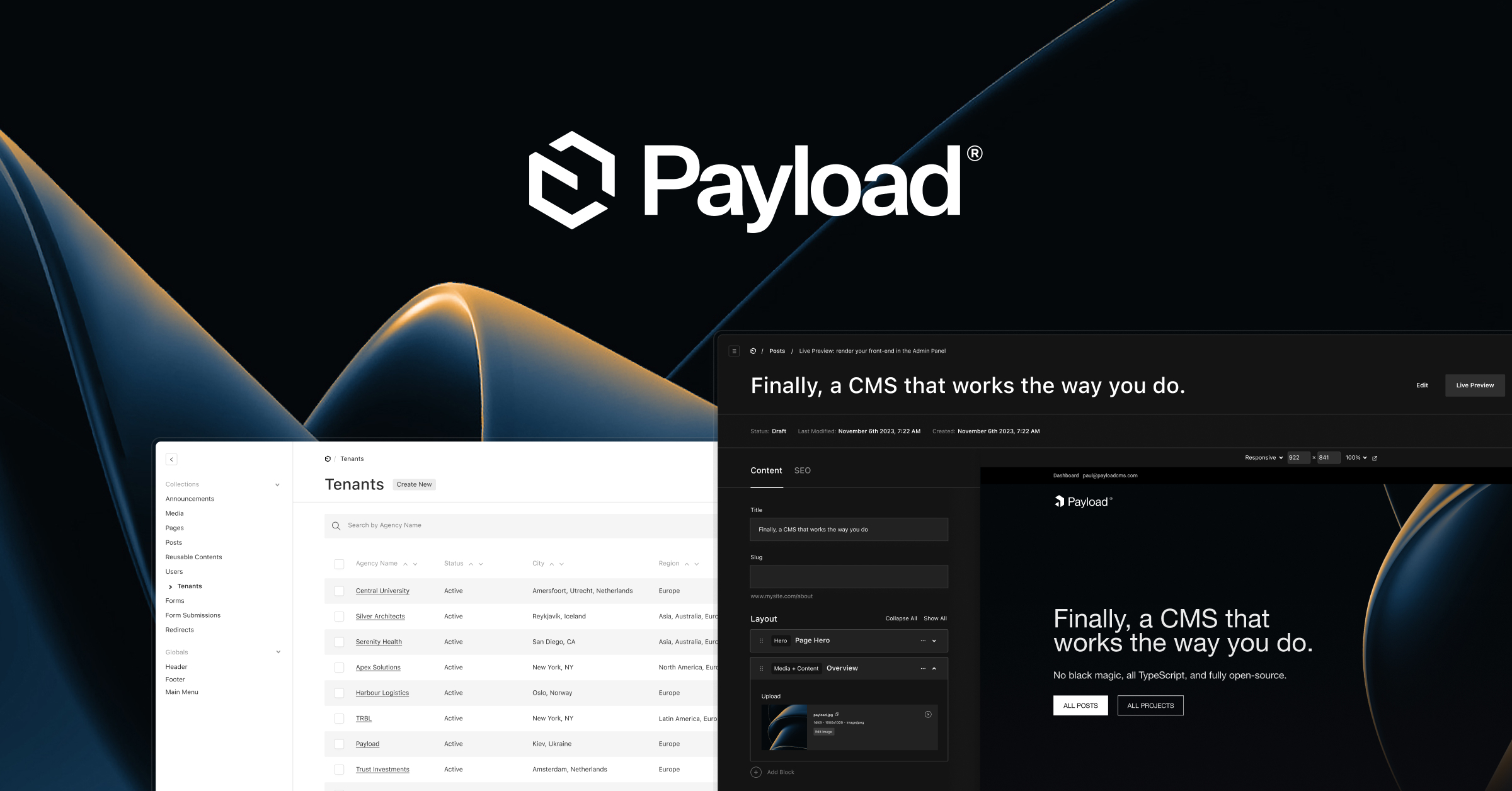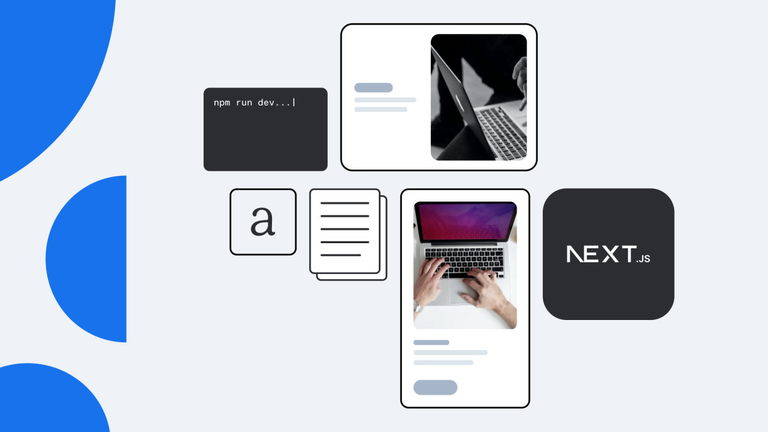Choosing the Best Open Source Headless CMS for Your Business
This post explains the benefits of open-source CMS and how to select the best one for your requirements, with an emphasis on Strapi, Sanity, Directus, and Payload CMS

Introduction to Open Source CMS
An open-source CMS enables organizations to access, alter, and adapt the core code, allowing them to develop unique content solutions suited to their individual needs. These solutions are crucial for enterprises seeking flexibility, scalability, and control over their content management platforms. But what is a headless CMS, and why should you consider it?
In classic CMS designs, the content and display layers are tightly linked. However, with headless CMS solutions, the content is saved independently from the front-end display, which is beneficial for delivering content to numerous platforms (e.g., web, mobile apps, digital kiosks). Using an open-source headless CMS provides customization and flexibility without limiting front-end technology choices.
Why an Open-Source CMS is Essential for Businesses:
- Flexibility: Open-source platforms allow businesses to modify and extend functionality according to their needs.
- Customization: Companies can customize their CMS to accommodate complex workflows, unique business needs, and integrations.
- Cost-efficiency: Open-source platforms eliminate licensing fees, reducing long-term costs.
Comparison of Popular Open Source Headless CMS Platforms
To assist you in deciding, we'll examine four prominent open-source headless CMS platforms: Strapi CMS, Sanity CMS, Directus, and Payload CMS. These systems are popular for their powerful capabilities, flexibility, and developer-friendly structures, each with unique strengths and limitations.
STRAPI
![]() Strapi
Strapi
Strapi is a fully open-source CMS with a full-featured API-based architecture and extensive customization options.
- Strengths: Strapi's API-first design allows developers to create custom endpoints and integrate with any front-end or third-party systems. It’s flexible, highly extensible, and boasts a large developer community.
- Weaknesses: Requires technical knowledge to set up and configure for non-technical users.
- Best for: Businesses needing a fully open-source, highly customizable headless CMS, especially those focused on content APIs and front-end flexibility.
SANITY
![]() Sanity
Sanity
Sanity CMS is known for real-time content editing and powerful content management tools, but only Sanity Studio is open-source (backend requires a subscription).
- Strengths: Offers collaborative editing, making it ideal for teams. It’s highly structured, enabling scalable content management.
- Weaknesses: Requires a subscription for full features and has a learning curve for those new to structured content.
- Best for: Enterprises needing collaboration features for large-scale content distribution and multi-language websites.
DIRECTUS
![]() Directus
Directus
Directus is an open-source headless CMS designed for managing content stored in SQL databases, featuring an intuitive UI.
- Strengths: Provides a no-code interface, ideal for non-technical users. Integrates well with SQL databases, offering powerful data management.
- Weaknesses: May be overkill for simpler projects due to its depth.
- Best for: Organizations managing complex datasets within SQL databases, needing a user-friendly interface for non-technical users.
PAYLOAD CMS
![]() Payload CMS
Payload CMS
Payload CMS offers deep customization capabilities with full TypeScript support, giving developers complete control over content and front-end development.
- Strengths: Highly customizable and works smoothly with JavaScript/TypeScript ecosystems, ideal for custom features.
- Weaknesses: Requires technical knowledge, less suitable for businesses without in-house development teams.
- Best for: Developer teams seeking maximum customization and control, especially those using JavaScript or TypeScript.
Key Factors to Consider When Selecting a CMS
When choosing an open-source CMS, consider these factors based on your needs:
- Ease of Use: Platforms like Strapi and Directus offer intuitive interfaces, while more developer-centric options like Payload CMS require technical skills.
- Customization: For businesses with complex workflows, flexibility in customization is crucial. Strapi and Payload CMS excel here.
- SEO and Localization: For global businesses, SEO-friendly features and multi-language content management are essential. Sanity and Strapi offer robust tools for these needs.
- Scalability and Performance: For high-traffic projects, scalability is crucial. Directus and Sanity are enterprise-ready, and Strapi’s API management suits large projects.
- Third-Party Integrations: Platforms like Strapi and Sanity provide APIs for seamless integration with CRM systems, analytics, and marketing tools.
- Content Workflow: Sanity’s real-time collaboration features support optimized content workflows.
- Pricing: Costs vary depending on the need for free solutions or additional features (e.g., Sanity’s paid backend).
Detailed Analysis of Each Platform
Here’s a deeper look at the unique features, advantages, and challenges of four popular open-source headless CMS platforms: Strapi, Sanity, Directus, and Payload CMS.
Strapi
Strapi is a fully open-source headless CMS known for its powerful API-first architecture and flexibility.
- Key Features:
- API-first: Allows content delivery to various platforms (web, mobile, IoT).
- Full Customization: Extensive plugin ecosystem for core functionalities.
- Multi-Database Support: SQL and NoSQL database support.
- Authentication and Permissions: Role-based access control (RBAC).
- Strengths: Free to use, customizable APIs, and a large community.
- Weaknesses: Requires developer expertise; may be complex for non-technical users.
Sanity
Sanity offers a powerful content editing environment with real-time collaboration.
- Key Features:
- Structured Content: Supports diverse content types and scalability.
- Real-Time Collaboration: Teams can work on content together.
- Content Versioning: Tracks changes with version control.
- Customizable Studio: Extensible with React for tailored functionality.
- Strengths: Collaboration tools, content models for complex projects, and localization support.
- Weaknesses: Requires a paid subscription for the backend, steeper learning curve.
Directus
Directus is an open-source headless CMS that manages content in SQL databases with an intuitive UI.
- Key Features:
- SQL Database Management: Works with SQL databases like PostgreSQL, MySQL, and SQLite.
- No-Code Interface: Ideal for non-developers to manage content.
- Customizable API: Auto-generates REST and GraphQL APIs.
- Custom Roles and Permissions: Manages large teams and workflows.
- Strengths: User-friendly, SQL support, and free to use.
- Weaknesses: Complexity may be unnecessary for simpler projects.
Payload CMS
Payload CMS is a highly customizable, developer-centric headless CMS with TypeScript support.
- Key Features:
- Full TypeScript Support: Type-safe code for large projects.
- Customizable Backend: Extensible for specific needs.
- GraphQL & REST APIs: Flexible API options.
- Authentication and Access Control: Built-in user management.
- Strengths: Deep customization, ideal for TypeScript, developer-centric.
- Weaknesses: Requires technical expertise, not suitable for non-technical users.
Our Case Studies
At FocusReactive, we have deep expertise in building complex, scalable content management solutions.
Case Study 1: TrafficGuard
For TrafficGuard, a company specializing in ad fraud prevention, we developed a custom headless CMS to handle large data volumes and integrate smoothly with digital channels. Using a headless CMS architecture, we ensured content updates across platforms, creating a flexible system supporting TrafficGuard’s growth.
Case Study 2: Tipico
With Tipico, a global leader in sports betting, we implemented a headless CMS for digital transformation, handling high traffic volumes during major sporting events. The flexible CMS allowed rapid content updates and seamless integration, enhancing Tipico’s ability to meet customer demand quickly.
Conclusion
Choosing the right open-source CMS platform is crucial for businesses aiming to optimize content management and scale. Strapi, Sanity, Directus, and Payload CMS each offer unique strengths, from customization and API integration to collaboration features and scalability. Understanding your specific needs—whether ease of use, SEO, or multi-language support—is key to selecting the best CMS.
Payload CMS overview

At FocusReactive, we specialize in identifying and implementing the right CMS platform for your business needs. If you're ready to take content management to the next level, contact us to see how we can create a custom open-source CMS solution for you.







